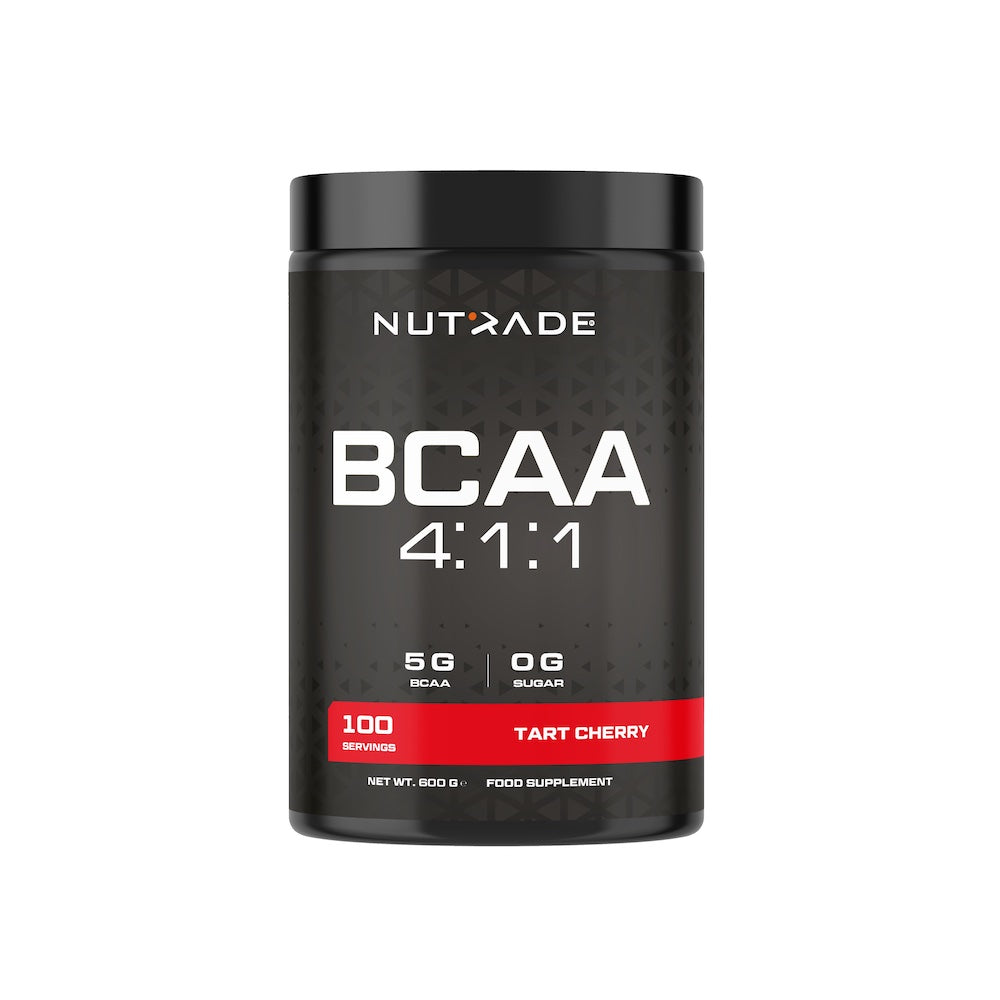What are BCAAs?

Leucine, isoleucine and valine, also known as BCAA or branched chain amino acids, are one of the 9 essential amino acids (EAA) that the human body does not produce, meaning they must be taken from outside. Approximately 40% of the amino acids that make up the muscles are BCAAs. They are important amino acids for muscle development.
What is Leucine?
Leucine is the most anabolic amino acid known. It is the main activator of the hormonal system called mTOR, which regulates cellular growth and therefore muscle development in mammals. It plays a key role in muscle protein synthesis.
What is Isoleucine?
It plays an active role in energy metabolism. It is essential for muscle protein synthesis.
What is Valine?
Although not as anabolic as leucine and isoleucine, it is important for muscle protein synthesis and growth.
What are the Benefits of BCAA?
During training, plasma tryptophan levels increase and a feeling of fatigue occurs. Studies have shown that BCAA use competes with free tryptophan, reducing the perception of fatigue. Since less tryptophan will go to the brain, you will feel more energetic and perform better.
How Do BCAAs Work?
Unlike many amino acids, BCAAs are mostly broken down in the muscle, bypassing the liver. This is not the case with other amino acids, so they play a role in energy production during training.
As the workout continues, the BCAA breakdown for energy increases. Tryptophan and BCAA competition is key here. It plays a role in muscle protein synthesis while also regulating blood sugar. It can protect the sugar in the liver and muscle and allow cells to take sugar from the blood.
BCAA; prevents protein breakdown, provides mTOR activation with leucine and can support muscle development or prevent muscle loss during weight loss by triggering protein synthesis and increasing muscle protein synthesis.
What are the benefits of BCAA?
Scientific research conducted by Humberto Nicastro in 2014 showed that the amount of leucine in the blood decreases significantly with exercise. The amount of leucine decreases by 11-33% in aerobic exercises, 5-8% in anaerobic lactic exercises and 30% in strength and weight training such as bodybuilding. Leucine has been proven to repair muscle damage caused by exercise and reduce the feeling of fatigue. In short, if your goal is muscle development, training quality and post-training recovery, BCAAs are among the most important amino acids in this regard.
What are the Functions of BCAAs in the Body?
It is useful in repairing post-workout muscle pain and micro muscle damage known as Doms (Delayed Onset Muscle Soreness). It is good for muscle soreness and supports muscle repair. We recommend using BCAA, especially if you have just started weight training.
Does BCAA Help You Lose Weight?
Scientific research has shown that the use of essential amino acids and therefore BCAAs in the diet helps in weight loss as it prevents destruction and muscle loss.
Does BCAA Make You Gain Weight?
Yes. BCAAs are one of the most anabolic amino acids and will help you gain weight if you use them with enough calories.
How to Use BCAA? Which Form of BCAA Should Be Preferred?
BCAAs, like all free form amino acids, should be taken before other nutrients.
How to Use BCAA Pre-Workout?
5-15 grams of BCAA 1 hour before training will be sufficient. A product in the 4:1:1 form is more beneficial before training. Also, using it together with pre-workout will create synergy.
How Should BCAA Be Used After Workout?
If you are using whey protein powder , weight gainer powder or any other supplement, BCAA should be taken first after training for the highest absorption, then other supplements. BCAA or BCAA 2:1:1 should be taken after training. A more complex amino acid such as Post-workout or Essential Amino Acid (EAA) containing the other amino acids you need most after training would be more beneficial.
Should I Use BCAA 4:1:1 or BCAA 2:1:1?
Pre-workout BCAA 4:1:1 provides higher anabolic activation (mTOR), while post-workout BCAA 2:1:1 is more beneficial for recovery and supporting muscle protein synthesis.
When to Use BCAA?
You can use it 1 hour before, during or immediately after training. Also, taking BCAA before breakfast helps the body get out of catabolism much faster.
Which foods contain BCAA?
There are plenty of BCAAs in animal foods such as all kinds of meat, milk, eggs, and chicken. The effect of the BCAA in peptide form found in these foods is quite different from the BCAA in powder form in supplement form, considering the length of time it takes for the body to absorb and digest it.
What are BCAA Advantages and BCAA Disadvantages? Are BCAAs Harmful?
BCAAs play a key role in muscle development, energy metabolism, post-workout fatigue and muscle soreness relief. That's why it provides an advantage. BCAA products have no scientifically proven disadvantages or harms.




Leave a comment